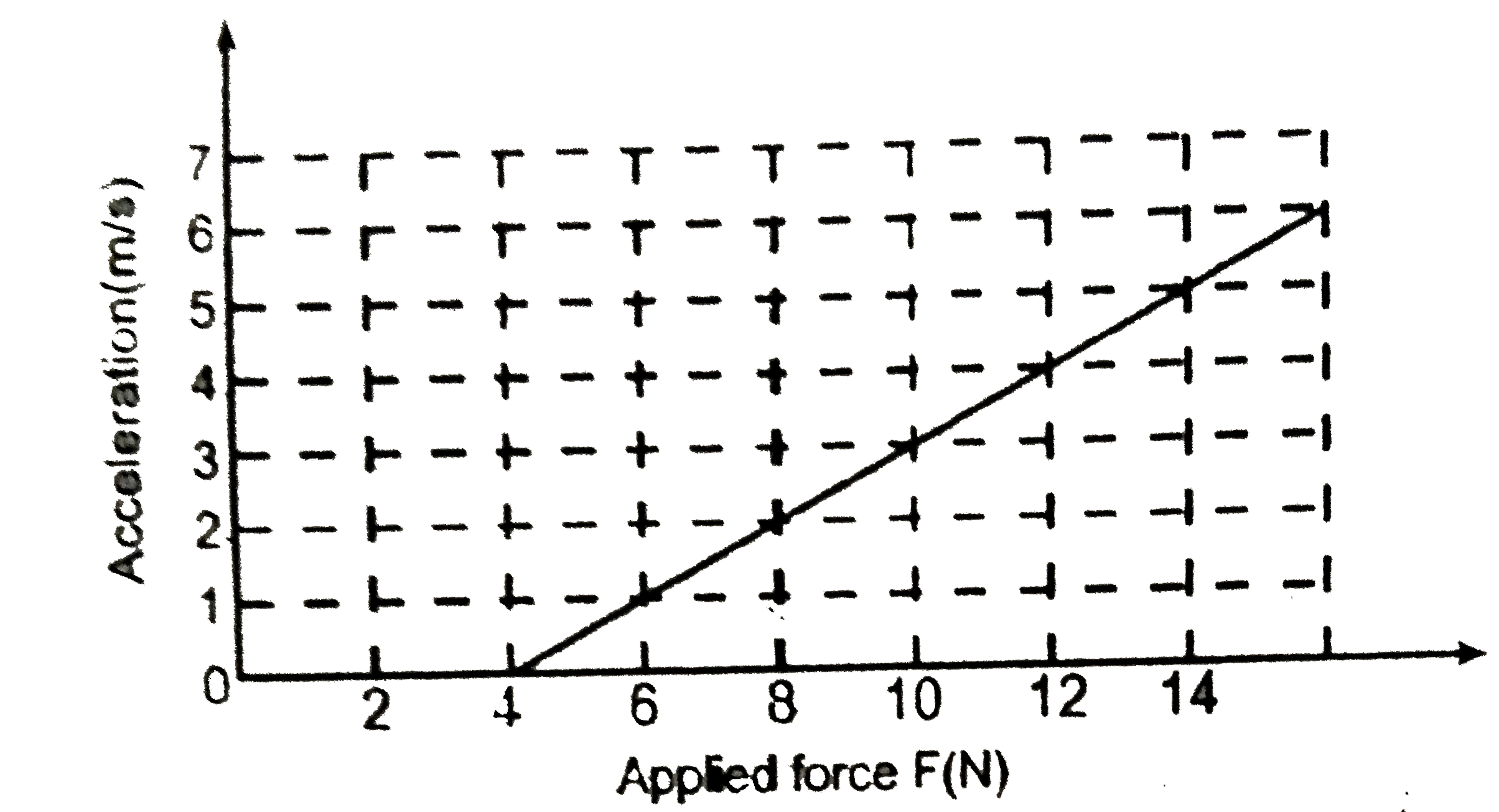A block of mass M is pulled along horizontal firctionless surface by a rop of mass m. Force P is applied at one end of rope. The force which the rope exerts on the block is
PM−m
PM(m+M)
PM(m+M)
PMM−m
The correct Answer is:c
To find the force that the rope exerts on the block, we can follow these steps:
Step 1: Understand the System
We have a block of mass M and a rope of mass m being pulled by a force P on a frictionless surface. The entire system (block + rope) will accelerate together.
Step 2: Calculate the Total Mass
The total mass of the system is the sum of the mass of the block and the mass of the rope:
Total Mass=M+m
Step 3: Apply Newton's Second Law
According to Newton's second law, the net force acting on the system is equal to the total mass multiplied by the acceleration a:
P=(M+m)⋅a
Step 4: Solve for Acceleration
Rearranging the equation to solve for acceleration a:
a=PM+m
Step 5: Analyze the Block
Now, we need to find the tension T in the rope that is exerted on the block. The only horizontal force acting on the block is the tension T.
Step 6: Write the Equation for the Block
Using Newton's second law for the block:
T=M⋅a
Substituting the expression for acceleration a:
T=M⋅(PM+m)
Step 7: Final Expression for Tension
Thus, the tension T (the force which the rope exerts on the block) can be expressed as:
T=P⋅MM+m
Conclusion
The force which the rope exerts on the block is:
P⋅MM+m
We have a block of mass M and a rope of mass m being pulled by a force P on a frictionless surface. The entire system (block + rope) will accelerate together.
The total mass of the system is the sum of the mass of the block and the mass of the rope:
Total Mass=M+m
According to Newton's second law, the net force acting on the system is equal to the total mass multiplied by the acceleration a:
P=(M+m)⋅a
Rearranging the equation to solve for acceleration a:
a=PM+m
Now, we need to find the tension T in the rope that is exerted on the block. The only horizontal force acting on the block is the tension T.
Using Newton's second law for the block:
T=M⋅a
Substituting the expression for acceleration a:
T=M⋅(PM+m)
Thus, the tension T (the force which the rope exerts on the block) can be expressed as:
T=P⋅MM+m
The force which the rope exerts on the block is:
P⋅MM+m
Topper's Solved these Questions
- COMPETITION CARE UNITBook:ICSEChapter:COMPETITION CARE UNITExercise:Dynamics ( WORK POWER ENERGY )
Explore 35 Videos
- COMPETITION CARE UNITBook:ICSEChapter:COMPETITION CARE UNITExercise:FRICTION
Explore 22 Videos
- COMPETITION CARE UNITBook:ICSEChapter:COMPETITION CARE UNITExercise:Dynamics (PROJECTILE MOTION)
Explore 31 Videos
- CIRCULAR MOTION Book:ICSEChapter:CIRCULAR MOTION Exercise:MODULE 2 (FROM ROTATIONAL KINETIC ENERGY , WORK ,POWER)
Explore 24 Videos
- DIMENSIONSBook:ICSEChapter:DIMENSIONSExercise:SELECTED PROBLEMS (FROM CONVERSIONS OF ONE SYSTEMS OF UNITS INTO ANOTHER)
Explore 9 Videos
Similar Questions
A block of mass M is pulled along a horizontal frictionless surface by a rope of mass m . Force F is applied at one end of rope. The force which the rope exerts on the block is:
View SolutionA block of mass M is pulled along a horizontal frictionless surface by a rope of mass m. If a force P is applied at the free end of the rope, the force exerted by the rope on the block is
View SolutionA block of mass M is pulled along a horizontal frictionless surface by a rope of mass m as shown in A horizontal force F is applied to one end of the rope. Find
(a) the acceleration of the rope and block
(b) the force that the rope exerts on the block
(c) the tension in the rope at its mid point

View SolutionA block of mass Mis pulled vertically upward through a rope of mass m by applying force F on one end of the rope. What force does the rope exert on the block?
View SolutionA block of mass M is pulled along a horizontal surface by applying a force at angle θ with the horizontal. The friction coefficient between the block and the surface is μ. If the block travels at a uniform velocity, find the work done by this applied force during a displacement d of the block.
View SolutionA block of mass M is pulled along a horizontal surface by applying a force at angle θ with the horizontal. The friction coefficient between the block and the surfasce is μ. If the block travels at a uniform velocity, find the work donen by this applied force during a displacement d of the blcok.
View SolutionA block of mass √3/10kg is placed on a rough horizontal surface as shown in the figure. A force of 1N is applied at one end of the block and the block remains stationary. The normal force exerted by the sruface on the block acts(g=10m/s2)

View SolutionA block of unknown mass is at rest on a rough, horizontal surface. A horizontal force F is applied to the block. The graph in the figure shows the acceleration of the block with respect to the applied force. The mass of the block is

View SolutionA block of mass 10 kg lying on a smooth horizontal surface is being pulled by means of-a rope of mass 2 kg. If a force of 36N is applied at the end of the rope, the tension at the mid point of the rope is,
View SolutionSTATEMENT-1: A block is pulled along a horizontal frictionless surface by a thick rope. The tension in the rope will not always be the same at all points on it.
because
STATEMENT-2: the tension in the rope depends on the acceleration of the block rope system and the mass of the rope.
View Solution

